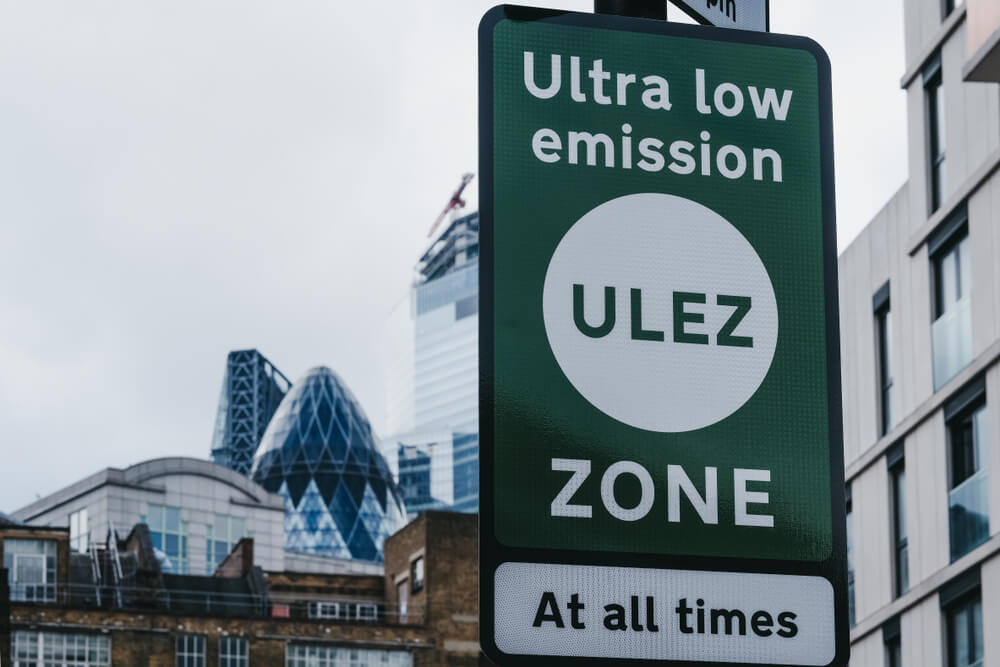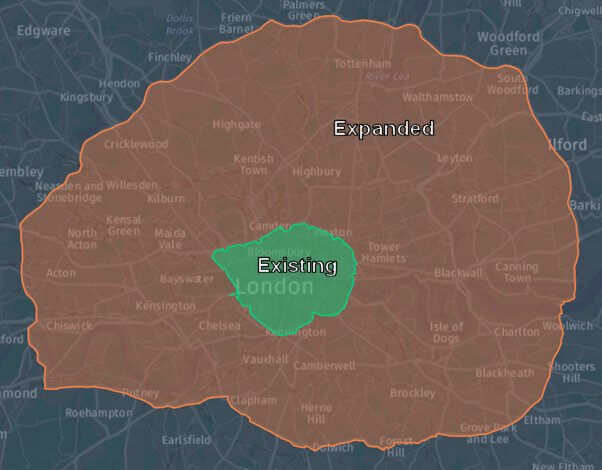Cleaner air, but at what cost?
We are more aware of our environment than ever before due to an increase in greenhouse gases, holes in the ozone layer, environmentalists protesting on our roads and pollution in our cities. Despite being the 15th best country for air quality and the 6th most environmentally friendly country, our government is under pressure to show that they are trying to improve and meet the ever-stringent environmental targets they are faced with. We all know that it’s the right thing to do, but it comes at a cost to individuals and businesses as we adjust to a new way of life. However, there are ways that we can minimise that cost by being more efficient and planning ahead.
Anyone who has lived in an inner-city area will be aware of the high levels of pollution from vehicles, contributing to lower air quality, especially along busy roads. This increases people’s risk of heart and lung disease and asthma. To help reduce this, local governments are starting to introduce clean air zones where certain vehicles are either not allowed to enter or will be charged a fee for doing so. The aim of this is to encourage drivers to use newer vehicles which meet the Euro VI emissions standard, to purchase ‘zero emission’ vehicles such as those powered by electricity or hydrogen, or to use public transport.
London introduced its first low emission zone in 2008 for large commercially operated diesel vehicles and expanded this in 2012 to cover vans, minibuses, utility vehicles and more. In April 2019 an Ultra-Low Emission Zone (ULEZ) was created, covering the same area as the congestion charge zone in inner London, but applying to a wider range of vehicles including cars and motorcycles.

Vehicles entering these zones have their number plates read by a network of cameras and must either meet the newer emissions standard or the drivers will be charged a daily fee of between £12.50 and £100, depending on the vehicle type.
Since the ULEZ has been launched the London Assembly claims that it has reduced the number of polluting cars driving in the zone each day by 44,000 and that toxic NO2 concentrations have been reduced by 44%.
From 25 October 2021, the ULEZ in London will be significantly expanded from central London to create a single, larger zone up to the North and South circular roads. This is an increase in area of 1,809% (21-380km2) and covers 3.8 million people, compared to the existing ULEZ zone is which covers 203 thousand people.
For drivers of diesel cars older than September 2015 and some pre-2005 petrol who want to enter this zone at any time of day, this means that they will have to pay a daily charge or have to spend thousands upgrading to a newer car. The average price to buy an electric car is around £44,000 – almost 1.5 times the average salary in the UK so this option isn’t feasible for everyone. From a personal point of view, I own a perfectly good 2011 VW Golf diesel, but as the CACI offices in West Kensington are now within the ULEZ zone, this means I’ll have to pay the charge or buy a new car if I want to come into the office.
Car drivers are not the only ones who will be impacted by the expanded ULEZ zone. Delivery drivers, logistics companies and people living in the zones will also be negatively impacted by the changes. Specifically, anyone delivering goods inside London will need to ensure that they are driving a newer vehicle which meets the emissions standards, or they will need to pay the charge. This inevitably will be passed on to customers who will be paying for living in an area with lower pollution.
London is not the only city that is affected by low emission zones. CACI have recently undertaken a study into low emission zones and have discovered that in addition to London there are five other UK cities with low emission or clean air zones currently in place, including Bath, Birmingham, Brighton, Oxford, and York. In addition, a further ten cities are proposing to launch low emission zones in the next couple of years. Some of these low emission zones in these cities only currently apply to buses, taxis, or HGVs, but it is likely that they will be extended to include all vehicles in due course, as has been seen in London.

Comparing the existing and expanded ULEZ zones in London
So, if you’re responsible for a fleet of commercial vehicles, keeping the costs down and also meeting customer expectations – what do you do about it?
Based on the research into low emission zones, CACI have created a dataset of both the current and proposed low emission zones across the country. Knowing the location and extent of these zones is useful in understanding the demographic profile of people living within the areas for marketing and planning, especially as there is likely to be a greater demand for electric vehicles, cycle lanes and environmentally friendly transport solutions in these areas. CACI’s behavioural demographic solutions Acorn and Ocean can help identify households that are likely to be concerned about their environment and those who might be most affected by changes to transport infrastructure.
For logistics companies scheduling deliveries, knowing whether an address falls inside a low emission zone will help calculate any additional delivery charges that need to be applied or determine if that delivery should be served by a more modern, lesser polluting vehicle. If you need to plan for vehicles entering these zones on a daily basis but need to minimise your costs, whilst achieving your carbon efficiency targets, the dataset can be used in conjunction with your route planning software (such as CACI’s Pin Routes), so that the application can identify the roads and customer addresses that fall within the zones, and can plan the routes to minimise the cost whilst still meeting customer requirements.
As the number of low emission zones increases and we are forced to change the way that we travel, we can look forward to a further reduction in air pollution in our cities. However, the significant cost to both individuals and businesses as we change the way that we go about our daily lives is something that cannot be ignored. These environmental challenges are not going away, legislation and environmental targets are likely to become more and more stringent, meaning that we need to put in a solution now.